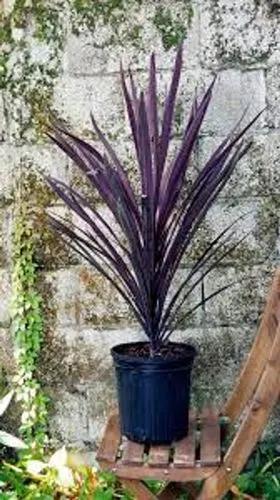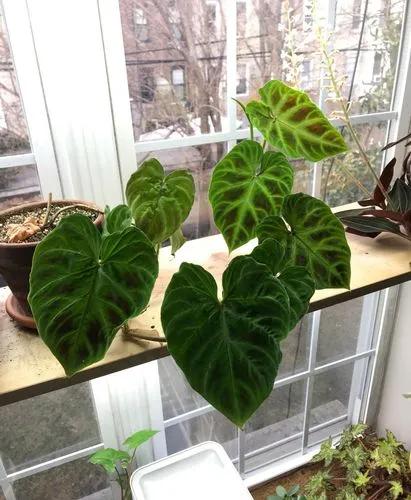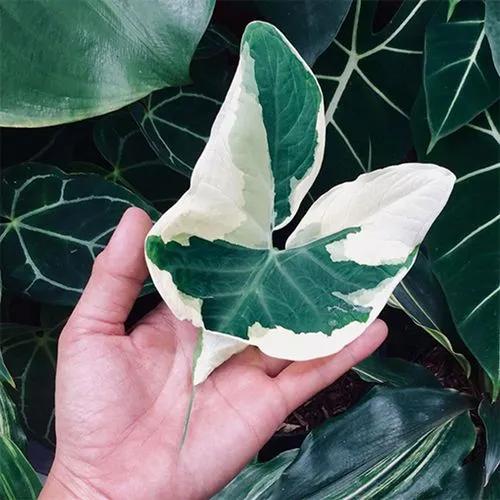Alocasia Stingray became very popular in plant lovers' circles because this plant looks exotic but has an easy way to take care of it. Alocasia leaves look like stingrays that swim in the air.
Alocasia Stingray Care
Alocasia macrorrhizos 'Stingray'



Like many houseplants of that type, Alocasia Stingray came from the humid forests of Asia, which is why it loves moisture. 'Alocasia Macrorrhiza 'Stingray' is a unique and distinctive houseplant with upward and outward-pointing leaves, making the beautiful ribbed, skin-like, emerald green leaf surface. The leaf of this Alocasia resembles a stingray in outline, from which it got its name.
How to Care for the Plant

Water

In order for your plant to be in good shape, it is very important to regularly water the stingray during the growing season, that is, in spring or summer. In winter, less watering is required. Water regularly, but in small portions.

Pruning

Pruning is a very important part of caring for your flower to thrive. For this step, you need to follow all the clear instructions, as the poisonous parts of the plant can cause nausea or diarrhea.
1. Use a pre-sanitized serrated knife and hand pruner. Protect your hands with gloves when working with the plant.
2. Examine the leaves of the Alocasia for signs of damage. Leaves and stems tend to turn yellow in cold weather.
3. Cut off the fleshy stem at the base of any yellowed, old, or diseased leaves.
4. Carefully make a U-shaped cut in the petiole of the yellowed leaves to allow new growth to form from the petiole.

Fertilizer

Spring is a phase of active growth for this plant, so you need to feed Alocasia Stingray with fertilizers actively. The first step is to increase the fertility of the soil. You can do this with a balanced, water-soluble fertilizer such as the 10-10-10 formula. Dilute ¼ teaspoon per liter of water. Always check and follow the directions on the product label for exact directions. Feed your plant from early spring to August, then take a break to allow the soil to rest and resume feeding next spring.

Sunlight

Alocasia loves light very much, so it will grow well in indirect sunlight. Direct rays can burn your plant, so try to avoid them.

Soil

The best solution for soil selection is a mix that consists of sand or pebbles (50%) and peat (50%). It is also very important for Alocasia that the soil has sufficient acidity to maintain moisture and ventilation.

Propagation

Reproduction of this plant occurs in spring or summer. To begin with, raise plants with pots, remove excess resources, and let the soil dry out. After this, gently divide the rhizome and separate offsets with sterilized scissors and pot the individual offshoots to separate containers with a good potting mix. After, one should water the pot thoroughly and let it drain well.

Temperature

Since Alocasia's birthplace is Asia, 18-22(˚C) degrees will be the ideal temperature for it. She needs to stay warm and avoid temperature fluctuations.

Container

'Alocasia Macrorrhiza Stingray' grows quite fast and can reach up to 100 cm wide and 150 cm high, so it is very important to change the container for the flower every 6 months. The pot can be of any material, but be sure to put pebbles in it for good drainage.

Fun fact

The shape of this houseplant looks exactly like a marine animal or an elephant's ear.

Popularity

623 people already have this plant 153 people have added this plant to their wishlists
Discover more plants with the list below
Popular articles






